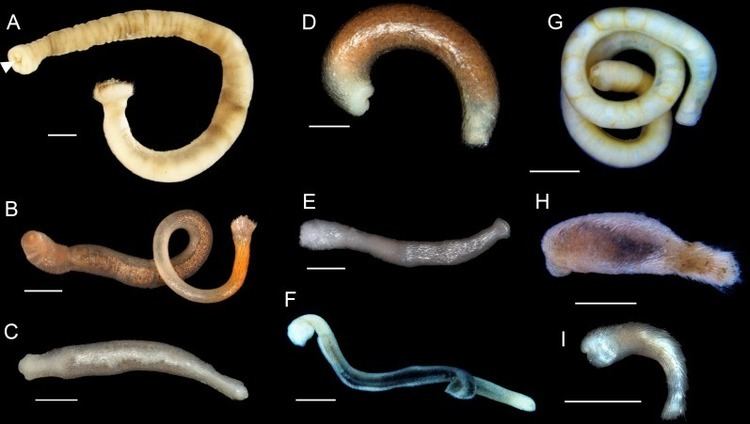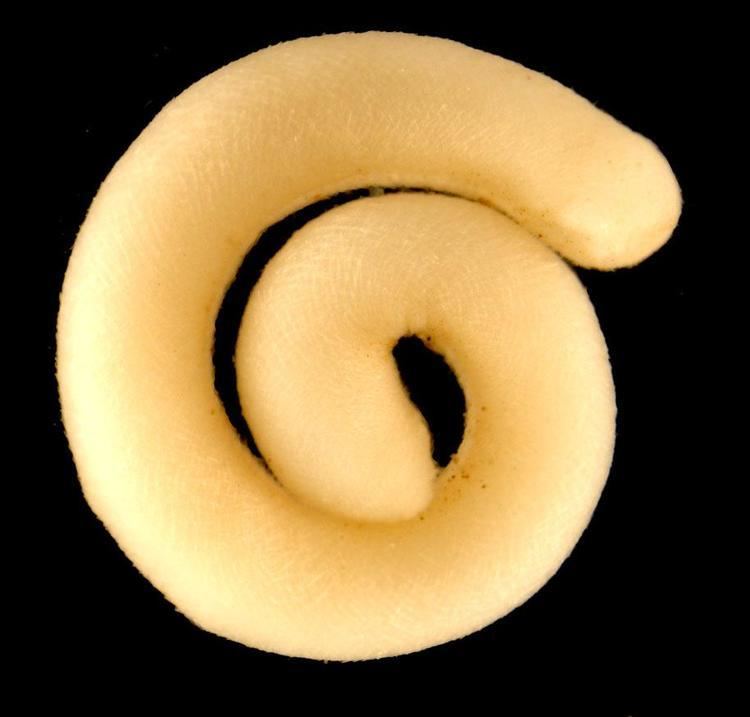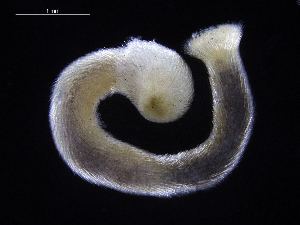Higher classification Molluscs Rank Subclass | ||
 | ||
Similar Solenogastres, Molluscs, Aplacophora, Monoplacophora, Tusk shell | ||
Trabalho de zoologia monoplacophora e caudofoveata
Caudofoveata is a small class within the phylum Mollusca, also known as Chaetodermomorpha. The class is often combined with Solenogastres and termed Aplacophora, but some studies have cast doubt on the monophyly of this group.
Contents

Anatomy

Caudofoveata are small (1-30 mm), mainly deep sea molluscs. They are worm-like, lacking shells or distinct muscular feet; they instead have scales and calcareous spines called sclerites, for movement.
Ecology

Caudofoveates live by burrowing through soft sediment, and feed by lying vertically in the sediment with just the mouthparts exposed and taking in passing organic detritus. During sexual reproduction, the female produces eggs which are fertilized and brooded, and then the larvae swim freely.
Diet
Caudofoveates feed on foramanifera.
Taxonomy
Caudofoveata comprises the following families and genera:
There are 15 genera, with about 150 known species.



